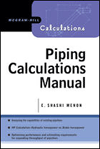As predicted in these columns more than a year ago, the U.S. has now become a major exporter of crude oil in a short time period, exceeding a million barrels a day and verging on going higher.
This unexpected surplus in world supply has played havoc with OPEC, whose 30 million barrels a day had combined with nonmember Russia (10 million barrels a day production) to cap its output of Brent crude for prices to work their way higher.
Despite a lifting of the 40-year-old U.S. oil embargo to assure America’s energy independence by President Obama, passed late last year, this has been capitalized on by U.S. oil producers, taking advantage of their lower-cost West Texas Intermediate and able to cover shipping costs; as well as realizing a profitable margin over global Brent crude. The U.S. producers also utilized foreign tankers, unloading Mideast exports to the U.S., thereby using empty tankers to convey crude oil to new customers. This has cut U.S. export costs.
Such fast-growing export use of America’s rising fracking oil production has added India, Hong Kong and Denmark to the expanding list of original buyers since late last year. These already included China and the U.K. early on. This expanding glut of competitive WTI available oil has had a negative world profit effect, down to the low $40 per-barrel price. However, longer-term global demand growth (2018-2020) should serve to solidify future pricing.
But it also faces the OPEC price fixers with the conundrum of how to maintain even minimal export optimum pricing and volume. The fresh addition of U.S. oil exports, not previously reckoned with by the OPEC membership, has no restrictive control relationship with the U.S. America’s WTI light oil actually is preferred by many new U.S. overseas customers whose unsophisticated refineries find the U.S. lightweight oil preferable to the heavier worldwide Brent crude.
This unexpected export trend is enthusiastically supported by the Trump administration, committed to use America’s vast commodity reserves for U.S. economic expansion, especially exports.
Has Saudi Arabia’s Mideast dominance shrunk?
Ever since Saudi Arabia was recognized by U.S. President Franklin D. Roosevelt in 1934, it has been portrayed as the hub of the Mideast Arabs. This was partially due to its housing of Mecca and Medina. In Muslim religious circles, these cities were the basis origin of Islam, to which thousands go to present their respect to the founder Mohammed.
While Saudi Arabia, despite its limited 31 million-person population, has gained the plaudits of Mideast leadership as well as being the world’s major oil producer, its generated wealth is controlled by royalty, such as the recent King Salman and their families. The Saudis have generally stayed above the fray, rampant in the Middle East, while still being accepted as Islam’s true center.
The Saudis also represented the focus of antagonism to the founding of the Jewish state, Israel, to the point President Roosevelt gave in to the king in 1945, delaying Israel’s founding until 1948. But that situation has rapidly changed since the 1973 Yom Kipper War when the Saudis launched an embargo of oil shipments against the U.S. for supporting Israel in that invasion.
Subsequently, the embargo was lifted as the Saudis asked for U.S. protection in the face of a rampaging Iraq that already had taken over Kuwait and was poised at the Saudi borders, which resulted in the Saudis asking the U.S. for aid, which they got.
Most lately, Saudi Arabia has softened its stand against Israel and its refusal to turn over land to the so-called “Palestinians,” who claimed Judah and Samaria as their homeland. However the following have drastically changed Saudi Arabia’s exalted position:
1) While the U.S. primarily ousted the Iraqis from Kuwait and pledged future support, the Saudis, almost exclusively Sunni in their Mohammedan belief, are being confronted by increasingly powerful Shia Iran, the other half of Islamic belief.
2) The Saudis’ expansive financial depository has been hit hard by the halving of oil prices since mid-2014. Even more disastrous to them has been U.S. shale fracking, capable of matching the Saudis’ 10 million barrels a day output. Still, as a leader of the OPEC global oil monopoly, the Saudis stood ready to implement a cutback as long as non-OPEC Russia, also a producer of 10 million barrels a day, went along.
3) But with the deflation of its multi-billion-dollar stockpile shrinking, Riyadh has floated a gigantic bond offer, representing 5% of the Saudis’ total oil production. Needless to say, the U.S. demurred but has cut back production to secure prices in the mid-$50s — one-half the pricing that existed in July 2014.
4) In a loose alliance with primarily Sunni Egypt, the Saudis have even developed a minimal alliance with Israel due to fear of Iran’s Revolutionary Guard’s control over Lebanon’s Hezbollah. Iran is partnered with the Russians. Their influence secured two Syrian Mediterranean sea outlets, which they never had before.
5) Although still the nominal head of OPEC, the Saudis have lost their once dominant stature and look for solid backing from the Americans, with a friendly Trump administration. Even a major entry of the self-styled caliphate “ISIS” has entered the picture, dramatically lowering even more the Saudis’ once dominant position.
Will IPO’s find intense vigor?
After a lackluster 2016, the renewed confidence in President Trump’s business growth appreciation seems to indicate new records in initial public offerings or IPOs. But despite this reversal from last year’s slump, a hang-back in the ability to match historically rich private offerings in stock-market value still is questionable.
An increasing number of companies have decided to “go public” as the year progressed, exceeding records not seen since 2014. U.S.-listed IPOs raised more than $20 billion in the first half of the year, five times more than made available at the same time last year. It so far has run double the comparable 2015 total in the wake of the Trump election.
Several major offerings by high-profile Goldman Sachs and Morgan Stanley are heading the hunt for independents, anticipating favorable tax advantages in the forthcoming new tax approaches being planned by the Trump administration, not to mention long-delayed infrastructure expansion.
In spite of this newfound confidence by the multi-billions of dollars available to be spent on privately-held business enterprises, most are waiting to see whether the current administration’s inspired confidence will be implemented with Congressionally-approved action.
Even so, the current momentum is a radical change from 2015 and most of last year when the fear of continued government regulations and general antipathy toward business and industry was manifest even while the new high-tech champs (Apple, Google, Microsoft, Amazon, etc.) were gaining most of the U.S. stock market’s interest and support.
Especially discouraged, prior to the surprising outcome of the Nov. 8, 2016 elections were the fossil-fuel giants Exxon-Mobil, Chevron, BP, Conoco Phillips and their suppliers, such as Schlumberger, who had foreseen continued overemphasis on renewables at the expense of further oil, natural gas and coal extraction efforts.
Even with this new surge of optimism and as the stock market itself has gained confidence, there still is an aura of fear that an enthusiastic business-minded Trump administration could be held back by an obstreperous Congress.
Consequently, a runaway investment surge is holding back, waiting to see what effect the new tax structure, import/export tariffs, a potential Mexico-border wall and the hoped-for elimination of inheritance “death” taxes will have, if implemented this year.
Such “doubting Thomases” are more disposed to wait for the 2018 midterm elections, in which a substantial number of Democrat senators will be up for reelection, in addition to some House seats now comfortably controlled by Republicans.
A solid GOP “thumbs-up at mid-term” likely would unleash a torrent of investment-fund expenditures never before seen in America’s history of business development.





